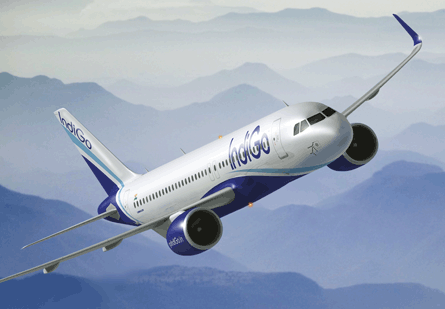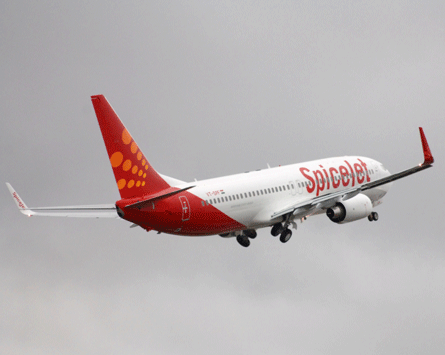Indian low-cost carrier IndiGo's order for 180 Airbus A320s in January has thrown the spotlight back on the country's airline industry, amid growing confidence that the sector could finally be putting behind its troubles of the last few years.
This time, however, it is the low-cost airlines that are leading the way. Privately held IndiGo's memorandum of understanding was for 150 of the new re-engined A320neo and 30 regular A320s, with the deal likely to be confirmed in the coming months. The aircraft, set for delivery between 2016 and 2025, and the move for the Neo, marked the first public commitment for the airframer's re-engined narrowbody.
 |
|---|
Both are expanding to take advantage of the growth in the price-sensitive domestic market, to increase their network within the country as the infrastructure catches up with demand, and to begin international operations. Under Indian government regulations, airlines must be in business for five years before starting international services. SpiceJet met that criteria last year, and IndiGo will do so later this year.
The three main full-service carriers - state-owned Air India and the publicly listed Jet Airways and Kingfisher Airlines - are in various stages of recovery. All of them made excessive orders for aircraft in 2005-07, and then dumped capacity in the following years in an attempt to capture market share. But with falling yields, all began to report losses that worsened during the downturn. The capital investments also drained their balance sheets, and all have tried to raise funds through different sources.
HYBRID MODELS |
|---|
All three also operate a hybrid business model, with a full service airline supported by a low-cost carrier that they incorporated later partly in response to the emergence of the budget airline market in the country. However, a failure to fully separate the two businesses has meant that the inherent inefficiencies and high costs from the full-service business have seeped into the subsidiaries. They have paid the price.
Air India has been making a loss for years. Beset by internal resistance to change and public objection to the state using tax dollars to bail it out, it is still trying to overcome its many problems. Jet and Kingfisher also reported losses, but appear to be faring better after cutting capacity and costs, and as the recovering economy boosted demand. All of them want to begin new services and say that they are ready to compete once again.
But the low-cost carriers, despite their significantly smaller fleets, are holding their own. Indian airlines carried 4.88 million passengers in November, up 5.9% from October. While Jet Airways and its subsidiary JetLite were the domestic market leaders with a 26.2% share, followed by Kingfisher with 19.1%, IndiGo edged ahead of Air India with the third largest share at 17.3%. And IndiGo led the pack with a seat factor of 91%, ahead of SpiceJet with 87.5%, closely followed by Kingfisher.
 |
|---|
Boeing said in its 2010 market outlook that India would need 1,150 commercial jets over the next 20 years, while Airbus forecasts demand for 1,032 aircraft over the same time period. Boeing also believes that the airlines are finally getting a handle on the situation after the highs and lows of the recent years.
"Airlines have matched capacity more closely to demand, especially on newly launched international routes," says the airframer in its recent 20-year outlook for India. "Measures like [leasing out] have proved effective in mitigating the near-term effects of the [economic] downturn and will, in the longer term, facilitate the return of leased airplanes to Indian carrier fleets."
Airbus predicts in its latest global forecast that domestic Indian traffic volume is set to soar at 9.2% a year, the overall figure exceeding 250 trillion revenue passenger-kilometres by 2029. It also predicts traffic from India to China, South-East Asia and North America as being among the fastest-growing flows.
Low-cost carriers such as IndiGo and SpiceJet are likely to be the major beneficiaries of this growth, suggests the Centre for Asia Pacific Aviation.
"India will also undoubtedly offer an enormous international short-haul market in its own right. The Indian diaspora has traditionally been underserved and, as new regional centres open up, the opportunities for low priced non-stop travel are magnified," it adds.
Read more about the challenges Indian airlines have grappled with over the last two years here
Source: Airline Business























